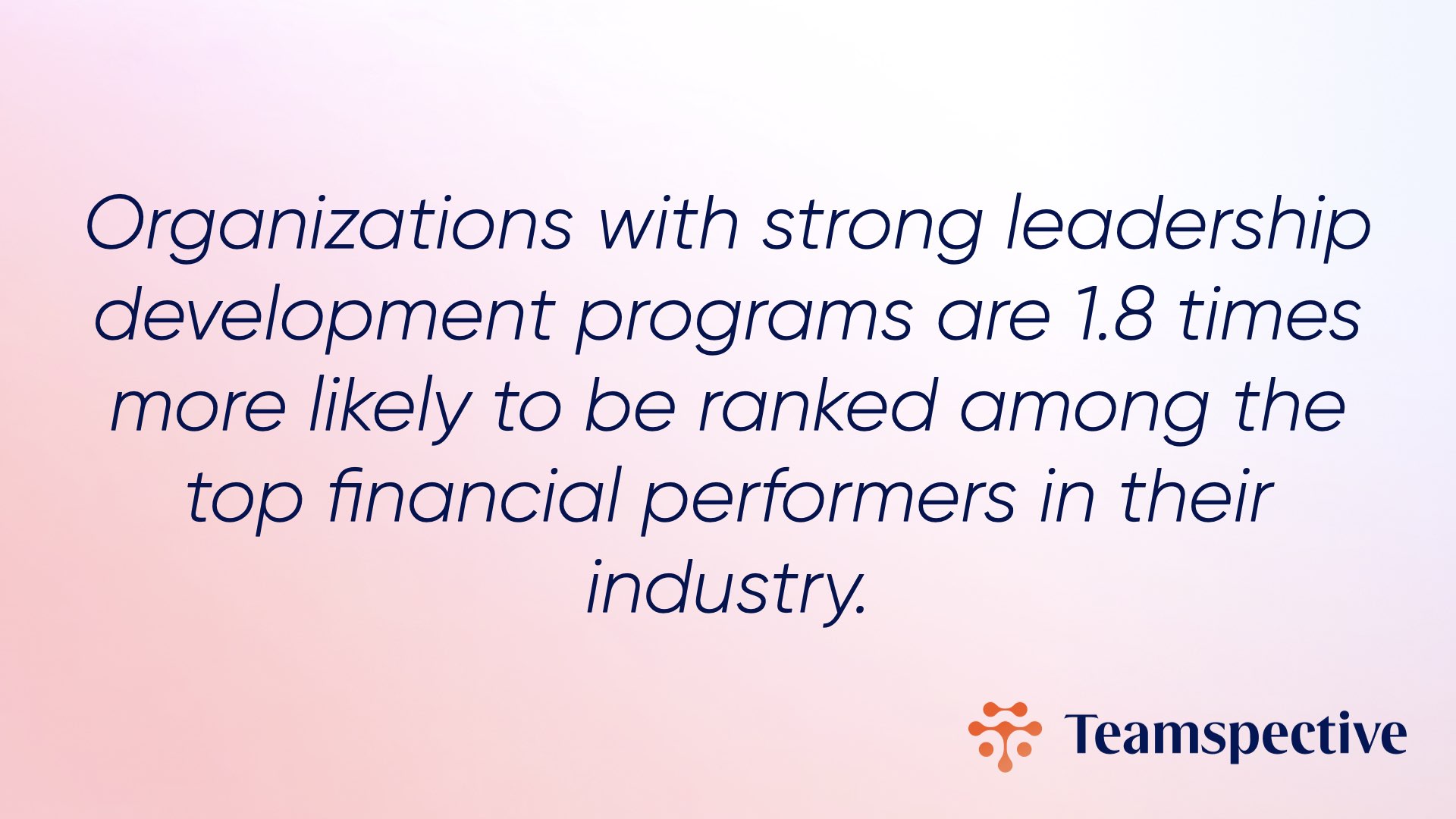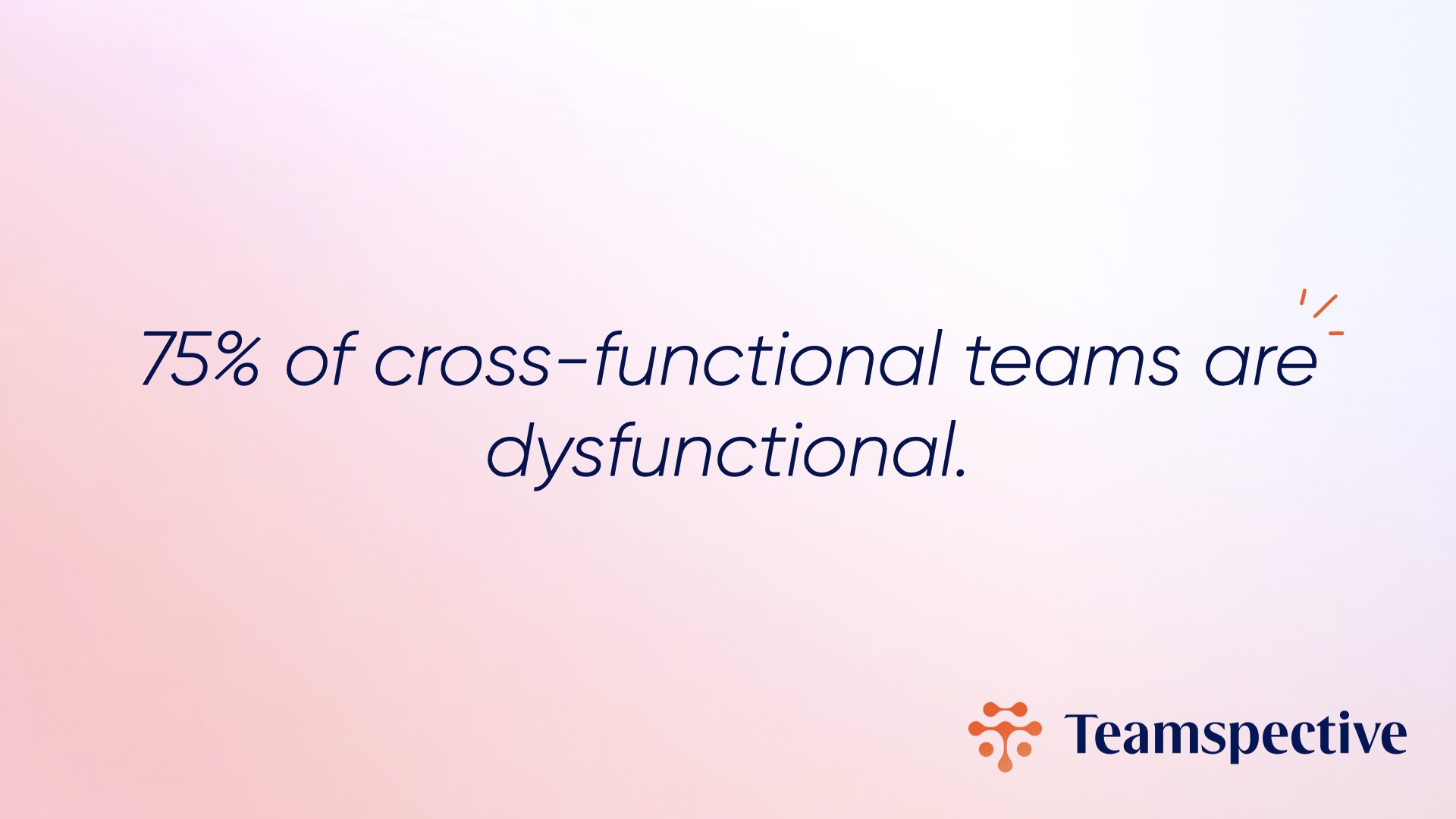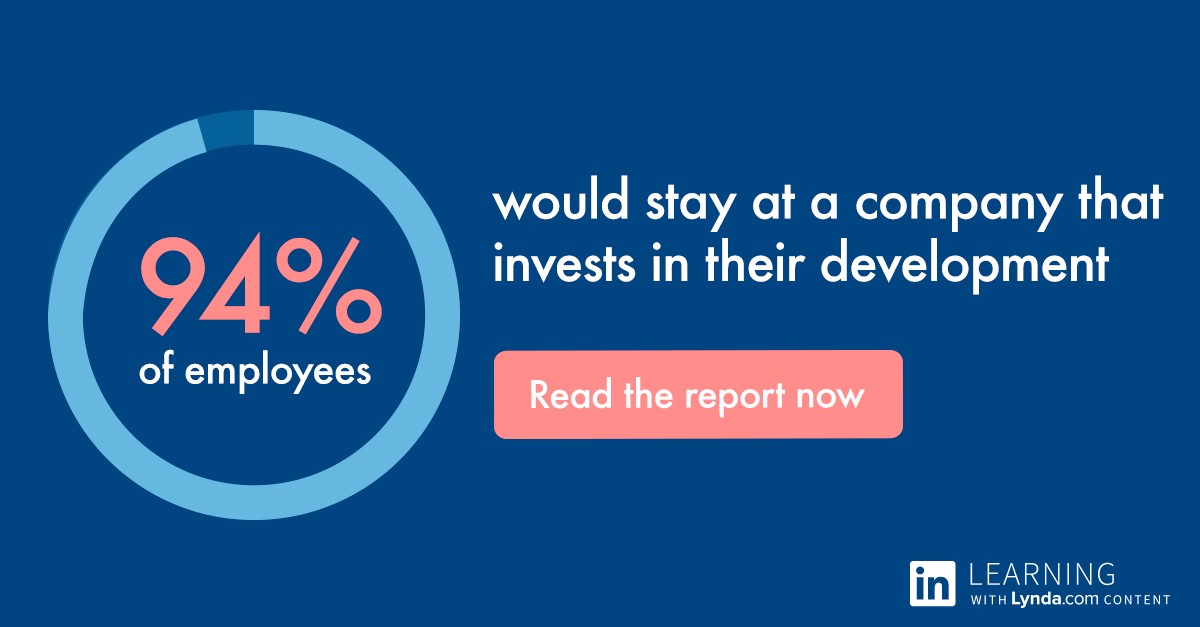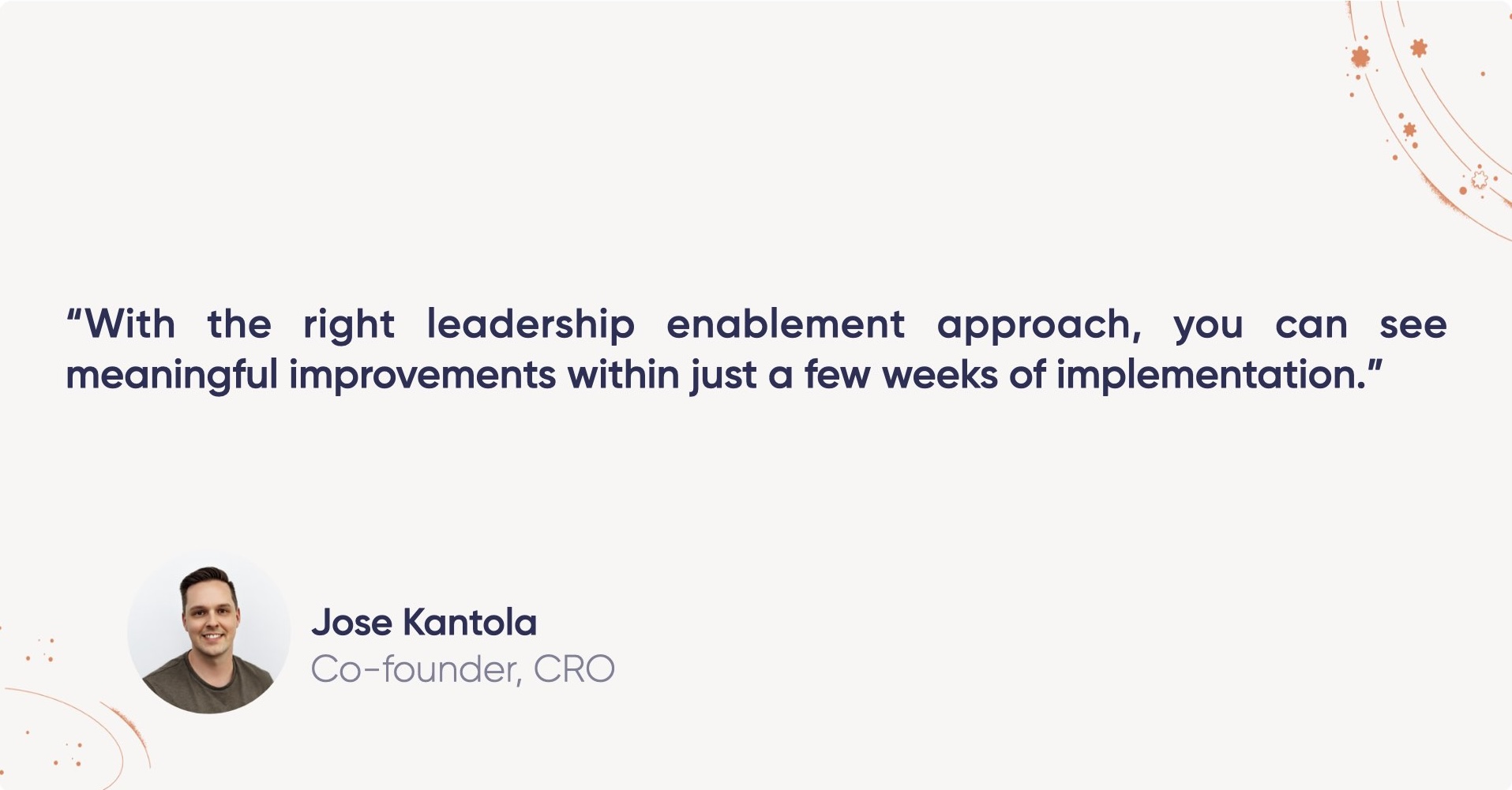Leadership Development Plan: Building Consistent, Data-Informed Leaders
June 3, 2025Most leadership development initiatives fail not because of poor content or lack of investment, but because they don't become part of a manager's daily workflow. It's time to make the shift from inconsistent, overwhelmed leaders to consistent, data-informed leaders who take action when it matters most.
I’ve spent years partnering with organizations trying to solve the same persistent challenge: how to turn overwhelmed managers into consistent, data-informed leaders who drive real organizational performance.
What I’ve discovered through my experience is that most leadership development initiatives fail not because of poor content or lack of investment, but because they don’t become part of a manager’s daily workflow. It’s time to make the shift from inconsistent, overwhelmed leaders to consistent, data-informed leaders who take action when it matters most.
Why Leadership Development Plans Matter
Let me be direct. Mediocre leadership directly leads to organizational underperformance. I’ve seen this pattern repeatedly across companies of all sizes.
The numbers back this up. According to Deloitte, organizations with strong leadership development programs are 1.8 times more likely to be ranked among the top financial performers in their industry. Meanwhile, a Gallup study found that managers account for at least 70% of the variance in employee engagement scores across business units.

When I work with executives who question the value of investing in leadership development tools, I point to these gaps that leadership enablement initiatives help address:
Lower employee engagement and retention
Leaders who require enablement create teams with lower commitment and higher turnover. This aligns with research from DDI showing that 57% of employees have left a job because of their manager.
Inefficient cross-functional collaboration
Underdeveloped leaders often create team silos and even tribalism. I’ve watched organizations struggle with the same projects taking twice as long simply because leaders couldn’t facilitate effective collaboration across team boundaries.
Stagnant performance management
Without proper development, managers default to slow, ineffective performance review cycles that fail to drive actual improvements. A study by Gartner reveals that only 14% of organizations are actually satisfied with their performance management system.
Absence of psychological safety
Leaders without proper development typically create environments where feedback is rare and psychological safety is low. This directly impacts innovation and problem-solving capabilities organization-wide.
The bottom line? Leadership development is a business necessity with a direct impact on financial performance. According Boston Consulting Group, companies with strong leadership development programs generated total shareholder returns 36% higher than companies with weaker programs.
Explore Leadership Enablement
Turn insights into action with Teamspective's Leadership Enablement solution.
How to Create a Leadership Development Plan
Based on my work with dozens of organizations, here’s the framework I recommend for creating an effective leadership development plan:
Step 1: Collect comprehensive leadership data
Start by gathering a complete picture of your current leadership landscape. This means going beyond traditional performance reviews.
The most successful plans combine three critical data sources:
- Engagement data: How are employees responding to their leaders? What’s the sentiment across teams?
- Performance data: Where are the gaps between expected and actual performance outcomes?
- Collaboration data: How effectively are teams working together? Where are the communication breakdowns?
Too often, I see companies making development decisions based solely on performance metrics while ignoring the deeper collaboration and engagement signals that tell a more complete story.
Step 2: Identify and prioritize development opportunities
With comprehensive data in hand, look for patterns that reveal your most significant leadership competency gaps. The key here is prioritization.
I recommend organizing opportunities into these categories:
- Urgent: Issues directly impacting business results or causing employee departures
- Important: Areas creating friction but not immediate crises
- Growth-oriented: Opportunities to move from good to great
Step 3: Define specific, actionable growth areas
Generic development goals produce generic results. For each leader, create clearly defined, actionable growth areas tied to specific behaviors.
For example, rather than “improve communication skills,” define targets like “practice active listening in team meetings” or “provide clearer context when assigning tasks.”
The more specific these growth areas, the easier it becomes to measure progress and provide meaningful feedback.
Step 4: Select development activities and resources
Now match your specific growth areas with appropriate development activities. These might include:
- Structured training programs
- One-on-one coaching
- Peer mentoring opportunities
- Real-world practice assignments
- Relevant reading and learning resources
The best development plans combine multiple approaches rather than relying solely on traditional training sessions.
I’ve found that the most effective development happens when it’s integrated into a leader’s regular workflow, not treated as a separate activity.
Step 5: Implement tools that integrate learning into daily leadership work
Most coaching and learning initiatives only have a short-term impact because changing behavior is genuinely difficult without consistent reinforcement. This is where leadership enablement platforms become essential.
Look for solutions that can:
- Provide leaders with personalized, data-driven insights about their teams
- Offer bite-sized coaching moments directly within their workflow
- Turn organizational data into specific action recommendations
- Support ongoing practice of new leadership behaviors
The most effective development happens when learning is woven into a leader’s regular workflow, not treated as a separate activity. Tools like Teamspective help normalize excellent leadership by providing AI-driven insights and actionable guidance right when leaders need it most.
Step 6: Establish measurement criteria and feedback loops
Finally, create clear metrics to track development progress and establish regular feedback loops.
Effective measurement includes:
- Before/after engagement scores for the leader’s team
- Performance improvements tied to specific development areas
- Peer feedback on observable behavior changes
- Self-assessment of comfort and competence in target areas
The difference between development plans that work and those that don’t often comes down to whether organizations provide the right tools and systems to support lasting behavior change. When leaders receive consistent, actionable guidance integrated into their daily work, development becomes sustainable rather than episodic.
Signs You Need Better Leadership Development
How do you know if your organization needs to improve its leadership development approach? Here are the warning signs I consistently observe:
Performance management cycles move too slowly
When performance issues linger for months without resolution, it usually indicates leaders lack the skills or confidence to address problems promptly.
Teams operate in isolation
Siloed teams and tribalism between departments are classic symptoms of leadership gaps. Great leaders naturally build bridges across functional boundaries. A Harvard Business Review study reported that 75% of cross-functional teams are dysfunctional, failing on at least three of five criteria: meeting a planned budget, staying on schedule, adhering to specifications, meeting customer expectations, and maintaining alignment with corporate goals.

Managers fail to develop their teams proactively
When managers view talent development as HR’s job rather than their core responsibility, it signals a fundamental leadership capability gap. 94% of employees say they would stay at a company longer if it invested in their career development, yet research shows that only 36% of organizations have formal mentoring programs to develop talent.

Leadership behaviors vary wildly across the organization
Inconsistent leadership practices create confusion and frustration. If your organization lacks a common leadership language and framework, development efforts will remain scattered and ineffective.
Feedback is rare and psychological safety is low
Teams where constructive feedback is uncommon and team members hesitate to speak up are usually led by managers who themselves never received proper development in creating safe, feedback-rich environments.
If you’re nodding along to three or more of these signs, your organization likely needs a more systematic approach to leadership development. The cost of inaction is substantial: poor managers cost the U.S. economy $398 billion annually, and the global cost is proportionately significant across all economies.
Technology’s Role in Modern Leadership Development
Technology has fundamentally changed what’s possible in leadership development. The traditional approach of annual training programs supplemented with occasional coaching simply can’t create the consistent, daily support modern leaders need.
A Leadership Enablement Platform provides the missing link by:
- Combining multiple data streams for holistic insights: By bringing together engagement, performance, and collaboration data, these platforms help leaders identify issues that would be invisible when looking at any single data source.
- Providing personalized guidance when it matters most: The best platforms offer specific, actionable recommendations based on a leader’s unique situation and team dynamics.
- Integrating development into daily workflows: Rather than treating leadership development as a separate activity, technology now enables development moments to be embedded directly into a leader’s regular communication tools and meeting cadences.
- Creating sustainable feedback loops: Regular pulse surveys and HR analytics create the continuous feedback loops necessary for ongoing improvement.
At Teamspective, our mission is to normalize excellent leadership by building an AI Agent that helps every leader proactively enhance employee engagement, performance and collaboration. We’ve seen firsthand how the right technology can transform leadership practices across an entire organization.
How to Measure Leadership Development
The question I hear most often from executives is simple: “How do we know if our investment in leadership development is paying off?”
Here’s what I recommend measuring:
- Employee engagement metrics: Track team-level engagement scores over time, paying special attention to employee questions about manager effectiveness and team climate.
- Performance acceleration: Measure how quickly performance issues are identified and addressed. Great leadership development shortens these cycles dramatically.
- Cross-team collaboration: Monitor collaboration patterns to see if silos are breaking down and teams are working together more effectively.
- Leader confidence and capability: Survey leaders themselves on their confidence in handling key leadership challenges before and after development initiatives.
- Direct business outcomes: Connect leadership improvements to specific business metrics like productivity, innovation rates, and customer satisfaction.
What often surprises executives is how quickly these results can appear. With the right leadership enablement approach, you can see meaningful improvements within just a few weeks of implementation. When leaders can see which small changes will make the biggest difference, they focus on those actions first and get results fast.

Conclusion
Consistent, data-informed leadership doesn’t happen by accident. It requires a systematic approach to development that encompasses the right data, clear growth paths, appropriate resources, and continuous feedback loops.
If you’re ready to transform leadership development in your organization, start by assessing your current approach against the framework I’ve outlined here. Then consider how a Leadership Enablement Platform might help you create the consistent, daily support your leaders need to excel.
The future belongs to organizations that make excellent leadership the norm, not the exception.



